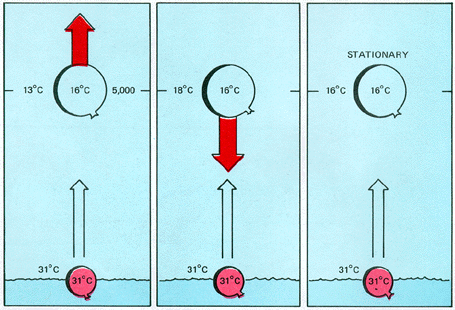|
|
|||
| Index |
 |
||
|
|
|
||
| Index |
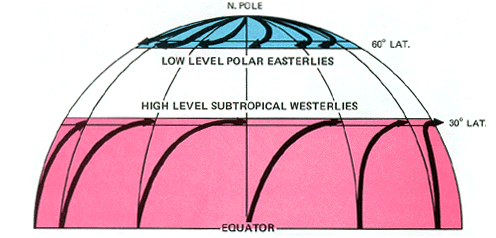 |
||
|
|
|||
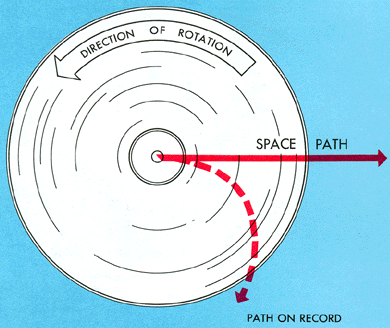 |
|||
|
|
|
||
|
|
|||
|
Index
|
  |
||
|
|
|||
| Index |
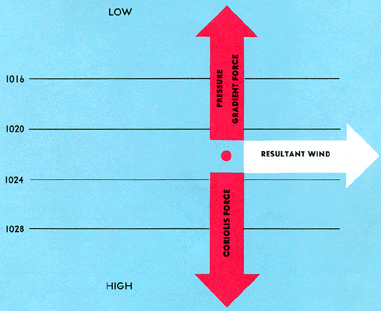 |
||
|
|
|||
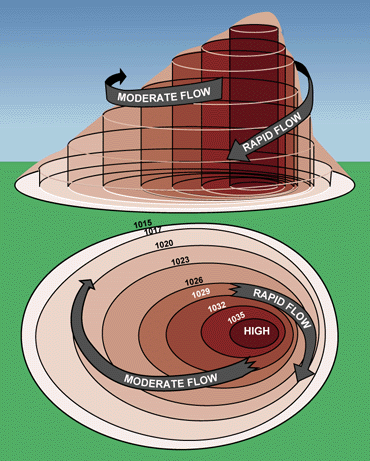 |
|||
|
|
|||
| Index |
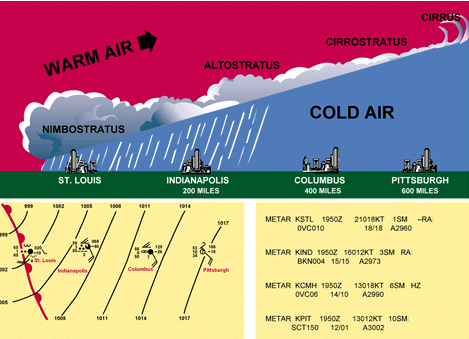 |
||
|
|
|||
| Index |
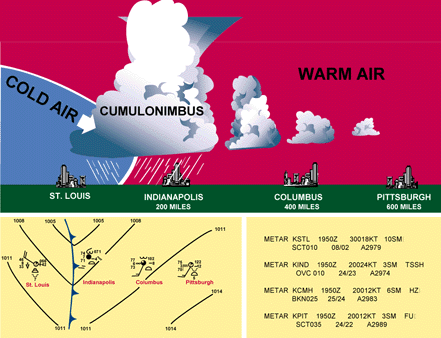 |
||
|
|
|||
| Index |
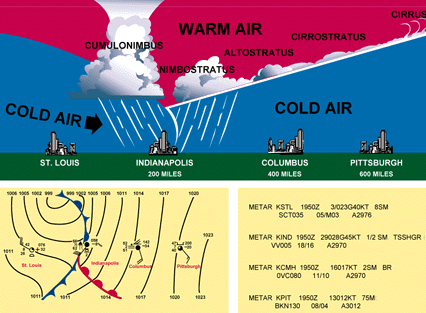 |
||
|
|
|||
|
Index
|
Stability related to
temperatures aloft and adiabatic cooling. In each situation, the balloon is filled at sea level with air at 31°C, carried manually to 5,000 feet, and released. In each case, air in the balloon expands and cools to 16°C (at the dry adiabatic rate of 3°C per 1,000 feet). But, the temperature of the surrounding air aloft in each situation is different. The balloon on the left will rise. Even though it cooled adiabatically, the balloon remains warmer and lighter than the surrounding cold air; when released, it will continue upward spontaneously. The air is unstable; it favors vertical motion. In the center, the surrounding air is warmer. The cold balloon will sink. It resists our forced lifting and cannot rise spontaneously. The air is stable - it resists upward motion. On the right, surrounding air and the balloon are at the same temperature. The balloon remains at rest since no density difference exists to displace it vertically. The air is neutrally stable, i.e., it neither favors nor resists vertical motion. A mass of air in which the temperature decreases rapidly with height
favors instability; but, air tends to be stable if the temperature
changes little or not at all with altitude. |
||
|
|
|||
| Index |
 |
||
|
|
|||
| Index |
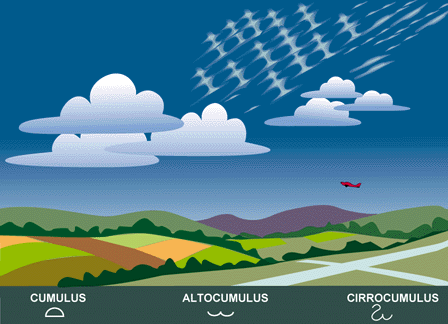 |
||
|
|
|||
| Index |
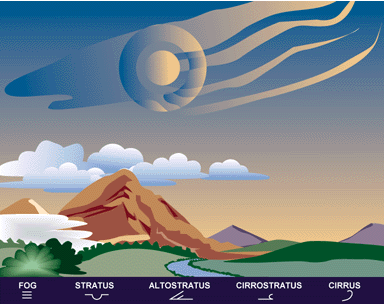 |
||
|
|
|||
| Index |
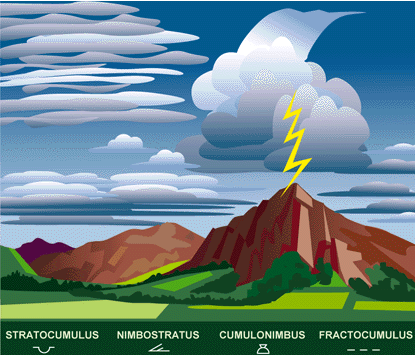 |
||
|
|
|||
| Index |
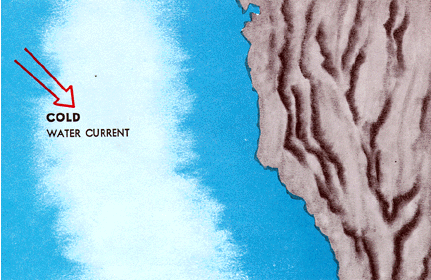 |
||
|
|
|||
| Index |
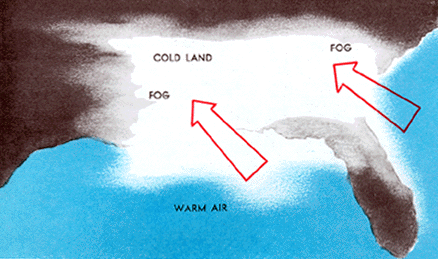 |
||
|
|
|||
| Index | Schematic of the
mature stage of a steady state thunderstorm cell showing a sloping
updraft with the downdraft and precipitation outside the updraft not
impeding it. The steady state mature cell may continue for many hours
and deliver the most violent thunderstorm hazards.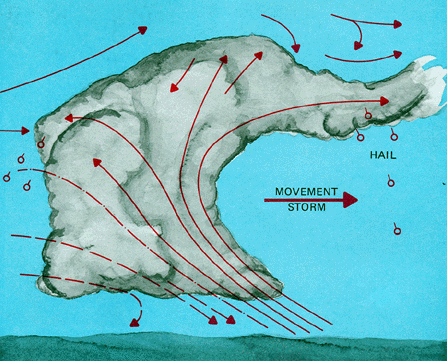 |
||
|
|
|||
| Index |
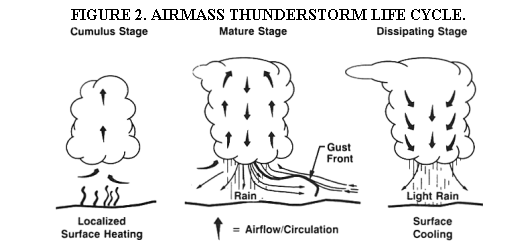 |
||
|
|
|||
| Index |
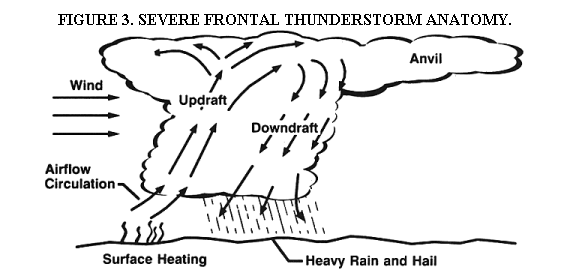 |
||
|
|
|||
| Index |
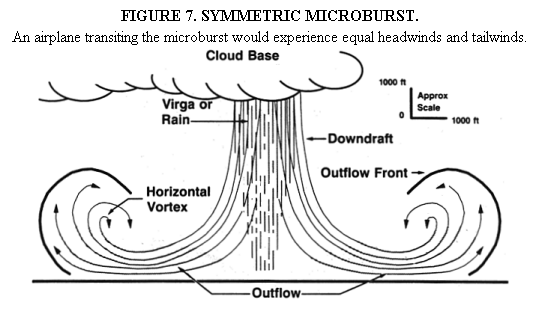 |
||
|
|
|||
| Index |
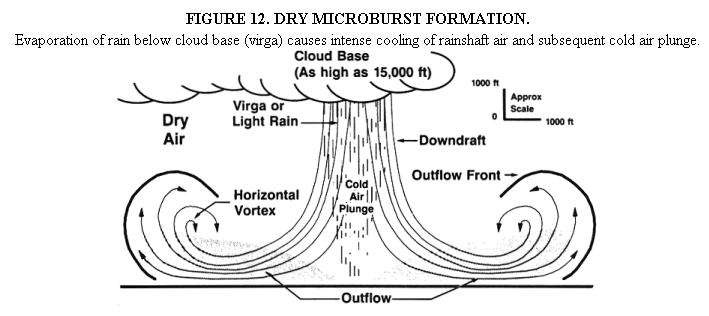 |
||
|
|
|||
| Index | • A cold front wind shear
occurs just after the front passes the airport and for a short period
thereafter. If the front is moving 30 knots or more, the frontal surface
will usually be 5,000 feet above the airport about 3 hours after the
frontal passage. • With a warm front, the most critical period is before the front passes the airport. Warm front windshear may exist below 5,000 feet for approximately 6 hours; the problem ceases to exist after the front passes the airport. Data compiled on wind shear indicate that the amount of shear in warm fronts is much greater than that found in cold fronts. • Turbulence may or may not exist in wind shear conditions. If the surface wind under the front is strong and gusty, there will be some turbulence associated with wind shear. |
||
|
|
|||
| Index |
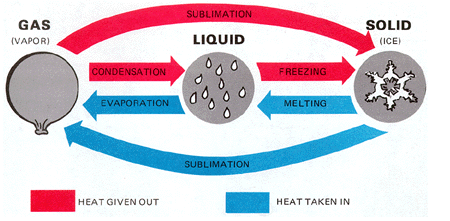 |
||
